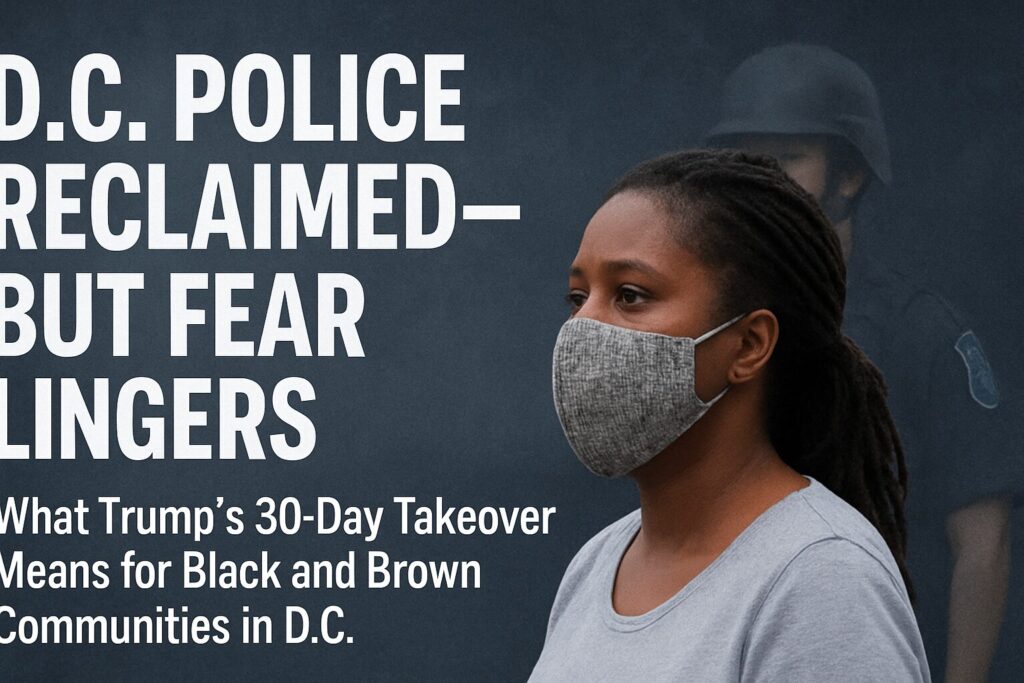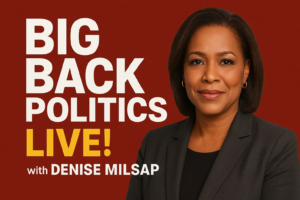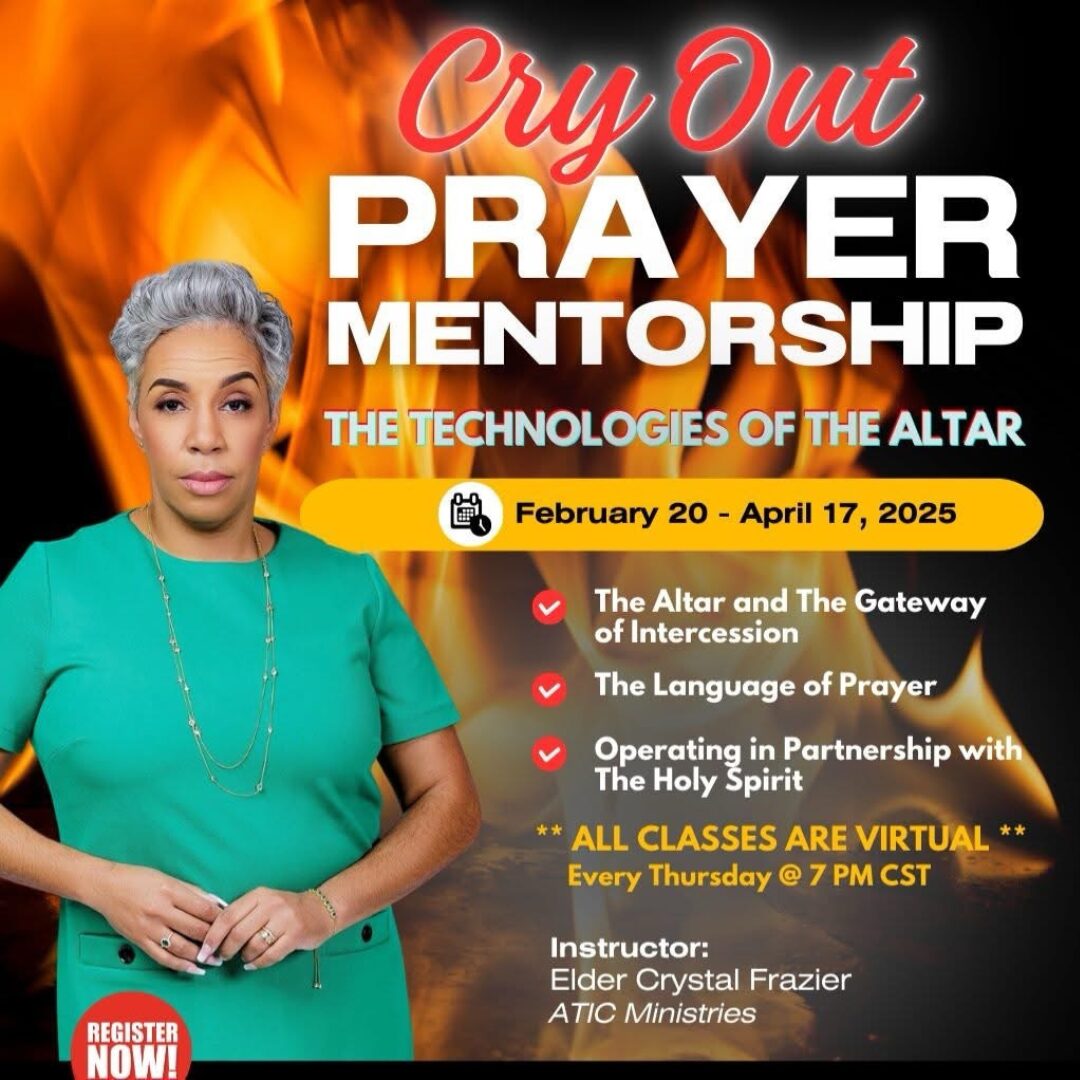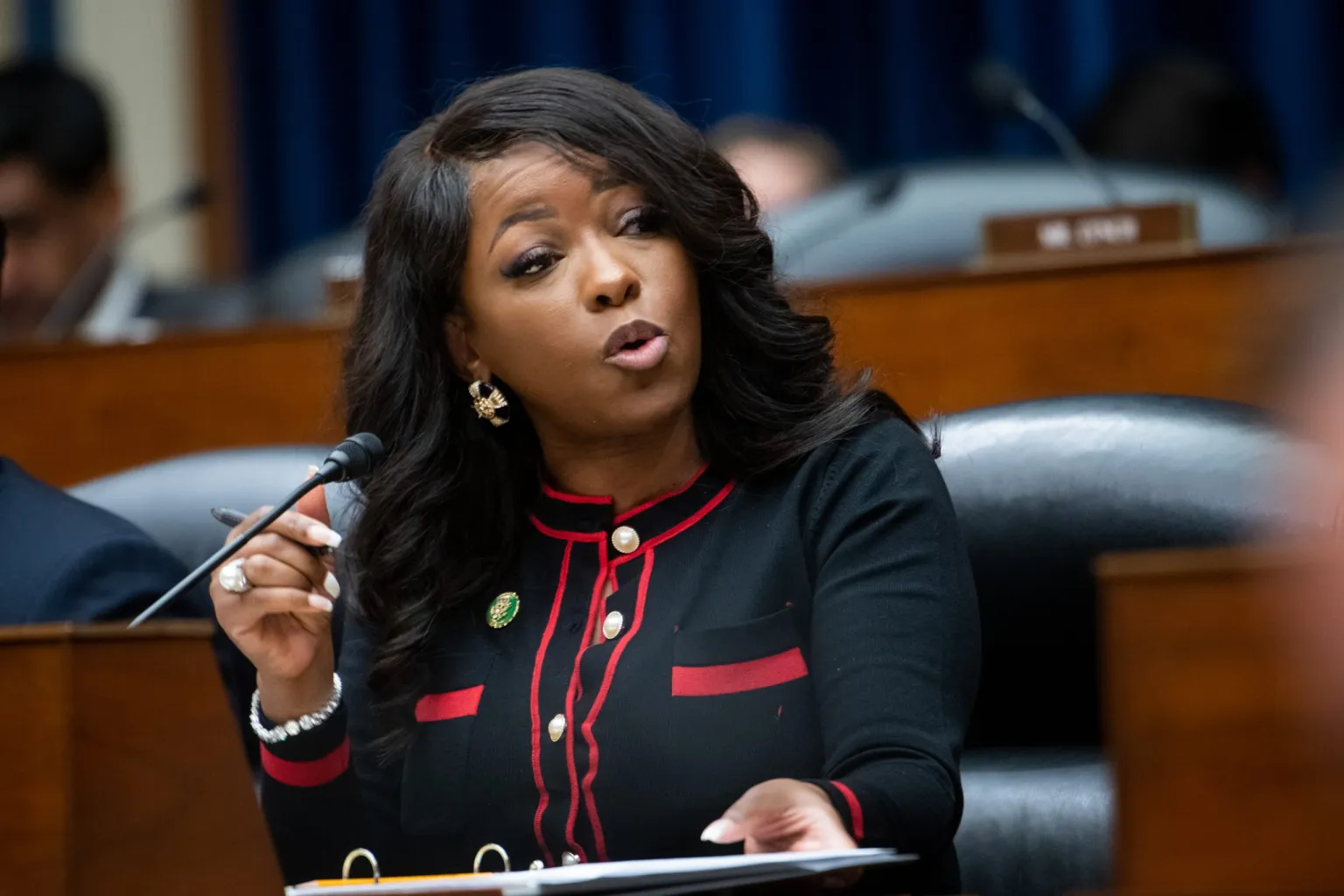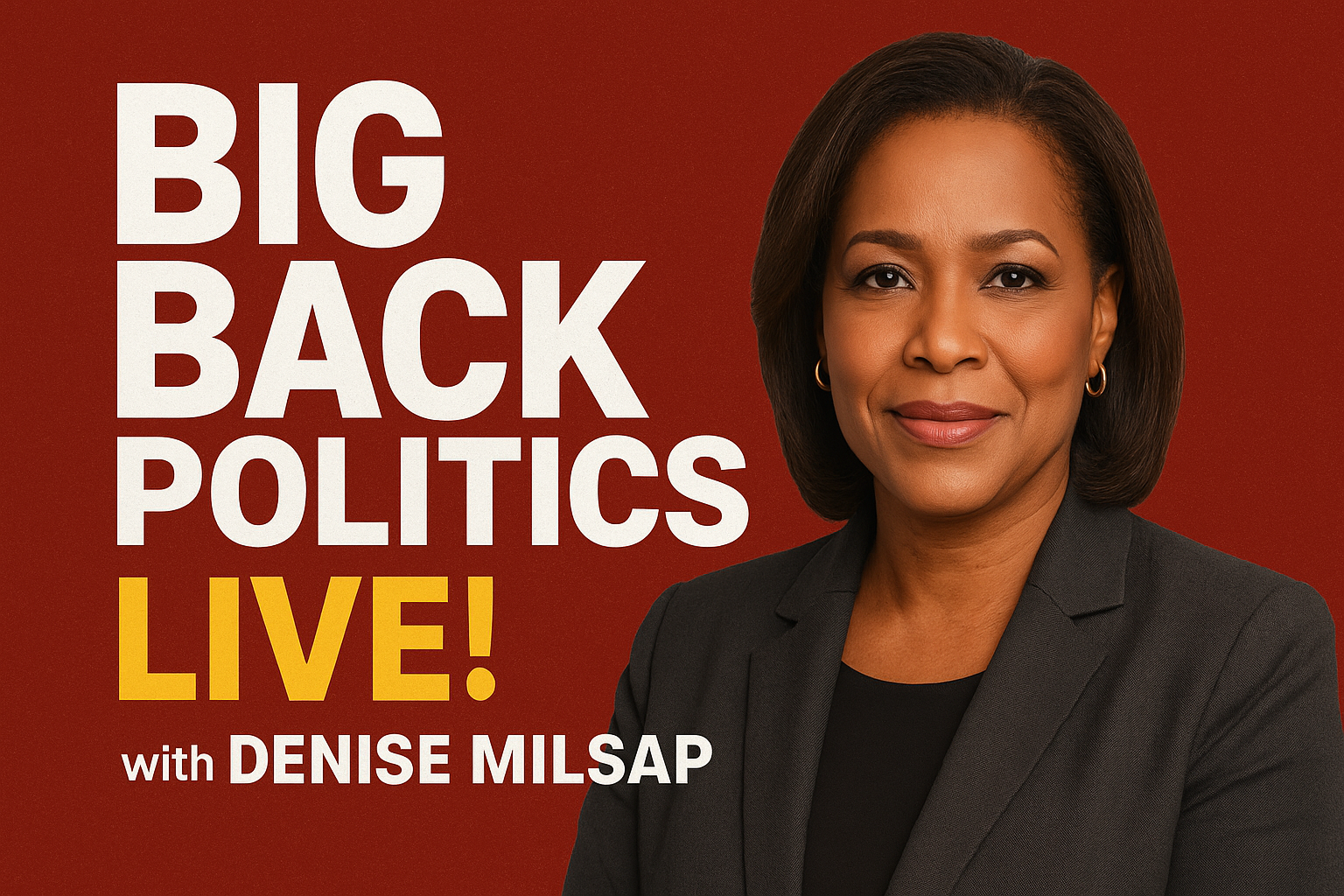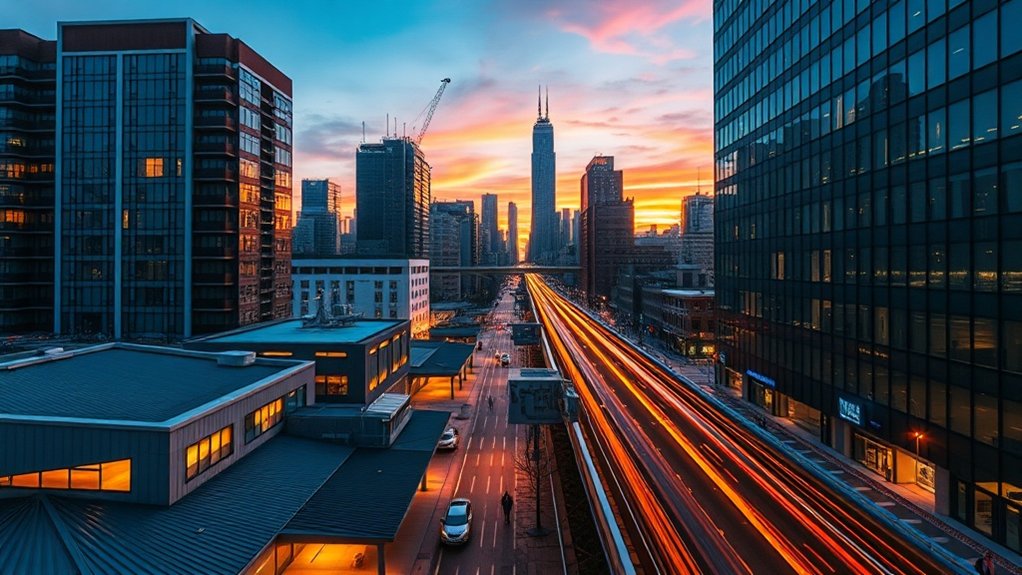Major Takeaways:
Local Authority Restored—but Not Wholeheartedly: Mayor Bowser regains jurisdiction over MPD, yet National Guard and federal agents remain active, blurring the return to normalcy.
Targeted Enforcement Left a Mark: The emergency triggered widespread racial profiling, ICE checkpoints, and increased low-level arrests in Black and Brown neighborhoods, fueling fear and distrust.
Autonomy Still Under Siege: Congress is debating new legislation to curb D.C.’s home rule—everything from presidential appointment of the attorney general to restricting emergency powers—keeping the existential fight alive.
D.C. Police Reclaimed—But Fear Lingers: What Trump’s 30-Day Takeover Means for Black and Brown Communities
The 30-day federal takeover of Washington’s police force, initiated by former President Donald Trump in early August, officially expired at midnight on September 10, 2025. The order, which temporarily shifted policing authority away from the city’s mayor and placed it under federal control, sparked national debate over public safety, civil rights, and the long-standing question of D.C.’s autonomy.
With the order lifted, Mayor Muriel Bowser’s administration has resumed oversight of the Metropolitan Police Department. Yet, while authority has technically returned to local leadership, the broader consequences of the takeover—particularly for Black, Brown, and immigrant communities—are still being assessed.
Why the Takeover Happened
Trump declared a 30-day emergency order citing rising crime rates, concerns over protests, and federal interests in securing the nation’s capital. The move activated the National Guard, expanded the role of federal law enforcement, and allowed Immigration and Customs Enforcement (ICE) to increase patrols and checkpoints in certain neighborhoods.
The policy was controversial for several reasons:
D.C. has no voting representation in Congress and limited autonomy under the Home Rule Act, making it uniquely vulnerable to federal intervention.
Local leaders, including Mayor Bowser and the D.C. Council, argued the order undermined home rule and stripped residents of their right to self-governance.
Civil rights groups raised concerns that the expanded federal presence would disproportionately affect Black and Brown residents, who make up nearly half of D.C.’s population.
Community Impact
Although the takeover was temporary, its effects were widely felt. Reports from advocacy groups and community organizations highlighted three recurring themes:
1. Increased Federal Presence
National Guard troops and federal officers were stationed in key areas, including near government buildings and in several majority-Black neighborhoods. The visible military and police presence raised tensions, particularly in Southeast and Northeast D.C., where residents reported more frequent stops and searches.
2. Immigration Enforcement
ICE checkpoints were expanded during the emergency period, sparking fear among immigrant communities. Advocacy groups documented cases of families avoiding public spaces, schools, and businesses. While officials pointed to a decline in certain crime categories, community advocates argued that the fear of deportation created a chilling effect that silenced residents and reduced civic engagement.
3. Trust in Local Institutions
Perhaps the most lasting impact was the erosion of trust between residents and local government. Even though Mayor Bowser has regained oversight, some residents remain skeptical of the city’s ability to protect them from future federal interventions. The question of who truly controls D.C. policing remains unresolved in the eyes of many.
What Experts Are Saying
Policy experts emphasize that the expiration of Trump’s order does not eliminate the underlying structural issues.
On Autonomy: Constitutional scholars note that the Home Rule Act allows Congress—and, by extension, the President—to intervene in D.C. affairs at any time. This leaves the city’s residents without the same protections enjoyed by states.
On Safety vs. Civil Rights: Supporters of the takeover argue that short-term crime reductions and increased security justified the emergency measures. Critics counter that the reductions were marginal and came at the expense of civil liberties.
On Future Precedent: Legal analysts warn that Trump’s move could set a precedent for future presidents, regardless of political affiliation, to invoke federal authority over D.C. during times of unrest or perceived crisis.
What’s Next
Although the federal order has expired, its legacy is far from over. Several key developments are already unfolding:
Congressional Oversight: Lawmakers are considering new restrictions on D.C.’s home rule authority, including proposals that would allow federal officials to appoint the city’s attorney general or further expand emergency powers.
Community Recovery: Local nonprofits are mobilizing to rebuild trust, offering legal aid to immigrants and creating safe spaces for residents to share their experiences during the takeover.
Statehood Debate: The episode has reignited calls for D.C. statehood, with advocates arguing that full representation in Congress is the only way to prevent future federal takeovers.
Why This Matters for Black and Brown Communities
For the nearly 46% of D.C. residents who identify as Black and the growing Latino and immigrant populations, the takeover highlighted the fragility of civil protections in the capital. While not all residents were directly affected by federal enforcement, the experience reinforced longstanding concerns about systemic inequality, over-policing, and the vulnerability of communities of color to political decisions made far above their heads.
Conclusion
Trump’s 30-day takeover of D.C. policing is officially over, but the debates it sparked are far from settled. Local authority has been restored, yet questions remain about the balance between public safety, federal oversight, and the rights of D.C. residents.
For Black and Brown communities, the past month was not just a legal or political moment—it was a lived reality that underscored the city’s unique challenges. Whether the experience will lead to meaningful reforms or simply fade into history depends on what local leaders, Congress, and residents choose to do next.

